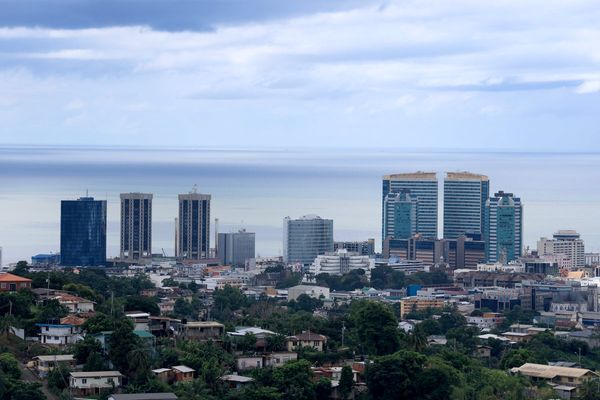
By now, you've likely heard the theory of the K-shaped economy in the United States. Unlike a V-shaped economy, where all boats are lifted, a K-shaped economy has one group prospering while another sinks.
On the upper tier of the K, you have affluent consumers who own plenty of stocks, property, or other assets. With the stock market closing in on its third straight 15% annual gain and home prices still near record highs, affluent consumers have a strong financial cushion and are not burdened by higher prices and interest rates.
However, on the other tier of the K are the lower-income consumers who are feeling the pinch of declining purchasing power. Lower-income consumers who don't own assets are facing stagnant wages, rising healthcare and energy costs, and prices that make homeownership out of reach.
How Benzinga Pro Caught COCH Before the Surge
Benzinga Pro recently published exclusive COCH news 15 minutes before the public press release. The stock jumped from about $1.12 to over $2.00 once the news went mainstream, giving members access to market-moving information before anyone else. That's the edge Benzinga Pro members get every day. See market-moving stories before they hit Bloomberg or CNBC, and try it free for 14 days to experience the difference yourself. Start Your 14-Day Free Trial Here
Deteriorating conditions among mid- and low-income consumers have been a prevalent theme on earnings calls from restaurants like McDonald’s and Chipotle, which is why their stocks have been whipsawing over the last few months.
Higher-end brands are benefiting from the resilience of affluent consumers and more cost-conscious consumers seeking lasting value with their dollars. Four luxury brands in particular have done well this year and look set to keep rewarding investors into 2026.
Hermes International SA
Let's start with the cream of the crop: Hermes International (OTCPK: HESAY) is the maker of the most sought-after leather handbags and apparel on the planet. The French firm has a nearly 200-year history of producing fine leather goods. Its Birkin and Kelly handbags are the pinnacle of high fashion.
Want to buy a Birkin handbag? You’d better be a big spender at Hermes or have an in with a sales associate, because acquiring one is notoriously hard (there's even a lawsuit over it!) However, this strategy of artificial scarcity has driven Hermes products to the top of the fashion pyramid, and its ultra-high-net-worth client base is relatively immune to economic disruption.

Despite the beneficial economic tailwinds, HESAY shares have lagged both U.S. and European indices in 2025. However, the stock appears to have halted its downturn thanks to strong support from buyers around the $235 mark. HESAY is once again bouncing off this support level, and the previous three bounces have resulted in higher highs. If the stock can rally above the 200-day simple moving average (SMA) this time, we could see a fundamental shift to bullish momentum.
Tapestry Inc.
One of the American fashion giants is Tapestry (NYSE:TPR), the $21 billion luxury firm that owns brands like Kate Spade, Stuart Weitzman, and Coach. Tapestry sells about $7 billion in high-end merchandise annually, and its fiscal Q1 2026 earnings report showed that sales are not slipping even as the U.S. economy becomes more bifurcated.
Released on November 6, Tapestry reported a top and bottom line earnings beat, highlighted by 21% year-over-year (YOY) growth from the Coach division. Tariffs remain a significant headwind for the company, and the Kate Spade brand is experiencing a sales decline, but the fundamental picture looks solid. Now onto the technicals.

The earnings report was a welcome sign for TPR investors, as the stock recently cleared the 50-day SMA after a multi-month uptrend. Shares plummeted back to June levels before bouncing firmly off the 200-day SMA after the upbeat earnings news. The next move for TPR will be a retest of the 50-day SMA; if the stock pops back above this level, the rally can resume.
LVMH Moet Hennessy Louis Vuitton
LVMH (OTCPK: LVMUY) is the result of fashion and fine wine coming together to form a high-profile lifestyle brand. As the full name implies, the company is a conglomerate of different fashion and apparel divisions, including leather goods and handbags, jewelry, perfume, makeup, wine and spirits.
The company hosted an unexpectedly positive Q3 conference call in October, during which management highlighted the resurgence of Chinese consumers and lower-than-expected losses in the Leather Goods division.

The post-earnings stock spike was massive, and LVMUY shares returned nearly 9% on the first trading day following the release. A Golden Cross confirmed the technical breakout, and the stock is now up more than 35% in the last three months following July's plummet to a multi-year low. The Relative Strength Index (RSI) is beginning to look a little frothy, with the stock up in 14 of the last 21 trading days, but the upward momentum now has both fundamental and technical tailwinds behind it.
Ralph Lauren Corp.
The steady Eddie of the high-end fashion brands has been Ralph Lauren (NYSE:RL), whose stock is up more than 40% so far in 2025. This outperformance can be directly tied to its earnings success: the company again posted exceptional results in its fiscal Q2 2026 report, released on November 6. Ralph Lauren reported its second-ever $2 billion quarter, with EPS of $3.79, beating analysts' expectations by nearly 10%.
With sales in the quarter up more than 16% YOY, the company raised its fiscal year 2026 revenue and margin guidance estimates despite anticipated headwinds from tariffs. Analysts were impressed by the quarter, leading UBS, Barclays, and Evercore ISI to raise their price targets the following day. UBS now has a Street-high $435 price target on RL, representing upside of more than 30% from current levels.

RL shares are also enjoying a promising technical trend, which has boosted the stock from the sub-$200 level to over $330 since Trump called off the Liberation Day tariffs in the second week of April. Since breaking back over the 50-day and 200-day SMAs in May, the 50-day SMA has acted as a sturdy support beam. Shares have bounced off this marker six times since the trend began matriculating in July, with the most recent test (and bounce) coming last week. The RSI has remained under the Overbought threshold for the entire rally, and there's still plenty of room for more gains before this indicator flashes a warning sign.
Editorial content from our expert contributors is intended to be information for the general public and not individualized investment advice. Editors/contributors are presenting their individual opinions and strategies, which are neither expressly nor impliedly approved or endorsed by Benzinga.
Photo: Shutterstock







